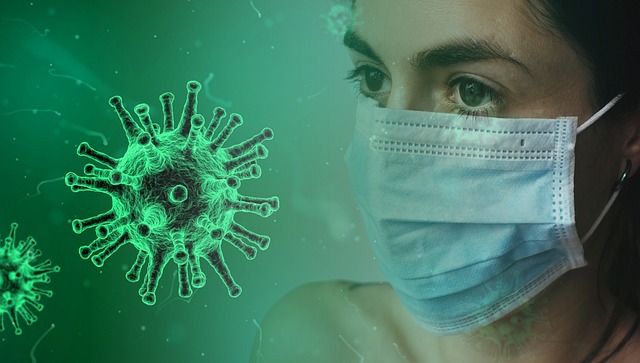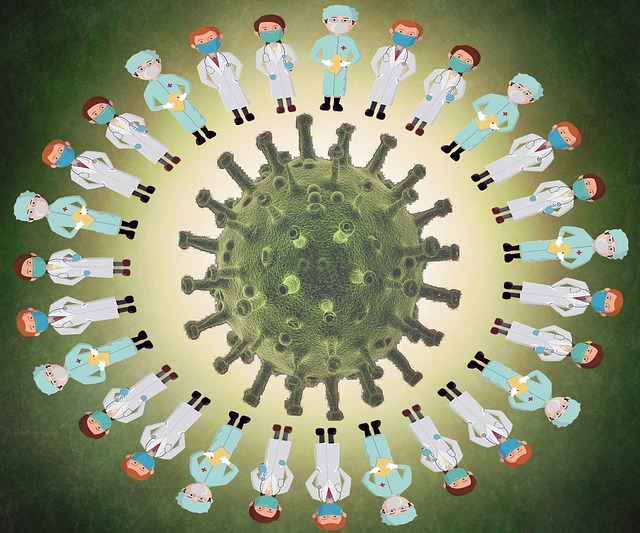What is the swine flu?
Swine flu, also known as H1N1 influenza, is a respiratory disease caused by the H1N1 virus subtype. It originally emerged in pigs but can infect humans as well.
The virus spreads through respiratory droplets produced when an infected person coughs or sneezes, or by touching surfaces contaminated with the virus and then touching the face.
Causes
- The primary cause of swine flu, or H1N1 influenza, is infection with the H1N1 virus subtype. This virus is commonly found in pigs, hence the name “swine flu,” but it can also infect humans.
- The transmission of the virus from pigs to humans can occur through close contact with infected pigs or by exposure to environments contaminated with the virus.
- Once the virus is introduced into the human population, it can spread from person to person through respiratory droplets produced when an infected individual coughs or sneezes.
- It can also spread by touching surfaces contaminated with the virus and then touching the face, particularly the mouth, nose, or eyes.
Certain factors may increase the risk of swine flu transmission and the severity of the illness, including:
- Close contact with infected individuals, especially in crowded settings.
- Weakened immune systems, such as in young children, elderly individuals, pregnant women, and people with underlying health conditions,.
- Lack of immunity to the H1N1 virus subtype due to previous exposure or vaccination.
Mode of transmission
- Swine flu, also known as H1N1 influenza, spreads primarily through respiratory droplets that are expelled when an infected person coughs or sneezes. These droplets can contain the H1N1 virus and can infect others if inhaled.
- Additionally, direct contact with secretions from the nose or throat of an infected person, known as nasopharyngeal secretions, can also transmit the virus. This can occur through activities such as touching surfaces contaminated with these secretions and then touching one’s mouth, nose, or eyes.
- Furthermore, the virus can persist on surfaces for a period of time, allowing for indirect transmission when a person touches a contaminated surface and then touches their face.
- This mode of transmission underscores the importance of practicing good hand hygiene and regularly cleaning commonly touched surfaces to reduce the risk of infection.
- In crowded environments or close-contact settings such as schools, workplaces, and public transportation, the risk of transmission may be heightened due to increased opportunities for exposure to infected droplets or contaminated surfaces.
- Therefore, maintaining physical distance from individuals who may be sick and wearing masks in crowded or enclosed spaces can help mitigate the spread of the virus.
Pathophysiology
The pathophysiology of swine flu (H1N1 influenza) involves several stages of viral infection and the body’s immune response. When the H1N1 virus enters the respiratory tract through inhalation of infected respiratory droplets, it attaches to and infects epithelial cells lining the upper and lower airways. The virus then replicates within these cells, leading to viral shedding and further dissemination of the virus. This triggers an inflammatory response in the respiratory tract, characterized by the release of pro-inflammatory cytokines and the activation of immune cells such as macrophages and T cells.
The excessive release of inflammatory mediators can contribute to the development of symptoms such as fever, cough, sore throat, and nasal congestion. In severe cases, the inflammatory response can lead to damage to the respiratory epithelium, resulting in pneumonia and acute respiratory distress syndrome (ARDS). Swine flu infection can also predispose individuals to secondary bacterial infections, exacerbating respiratory symptoms and increasing the risk of complications.
In addition to respiratory manifestations, swine flu can affect other organ systems, leading to systemic symptoms such as fever, headache, muscle aches, and fatigue. The virus may also enter the bloodstream and disseminate to other organs, potentially causing multi-organ dysfunction in severe cases.
Risk Factors
Various factors can increase the risk of contracting swine flu, also known as H1N1 influenza. These include:
- Weakened Immune System: Individuals with weakened immune systems, such as those living with HIV/AIDS, undergoing cancer treatment, or having other immunocompromising conditions, are at higher risk. Their bodies may struggle to fight off the virus effectively, increasing their susceptibility to severe illness.
- Children: Children, particularly those younger than 5 years old, are considered a high-risk group for swine flu. Their immune systems are still developing, making them more vulnerable to respiratory infections like H1N1 influenza.
- Chronic Diseases: People with chronic medical conditions such as asthma, diabetes, heart disease, or lung disease have an increased risk of complications from swine flu. These conditions can weaken the body’s ability to cope with respiratory infections and may exacerbate symptoms.
- Healthcare Professionals: Healthcare workers are at a higher risk of exposure to infectious diseases, including swine flu, due to their frequent contact with patients. Proper infection control measures, including vaccination and personal protective equipment, are crucial for reducing the risk of transmission among healthcare professionals.
- Travelers or Recent Contacts: Individuals who have recently traveled to areas experiencing swine flu outbreaks or have had close contact with someone diagnosed with swine flu are at an increased risk of contracting the virus. Vigilance in monitoring symptoms and seeking medical attention if necessary is essential for early detection and management.
Signs and symptoms
Signs and symptoms of swine flu are similar to those of most influenza infections and may include:
- Fever: A temperature of 38°C (100.4°F) or higher is a common symptom of swine flu. Fever may be accompanied by chills and sweating.
- Cough: A persistent cough, often dry or accompanied by phlegm, is a hallmark symptom of respiratory infections like swine flu.
- Sore throat: Irritation or pain in the throat, along with difficulty swallowing, may be present.
- Nasal Secretions: A runny or congested nose, along with sneezing, may occur as a result of a swine flu infection.
- Fatigue and Headache: Generalized weakness, fatigue, and headache are common flu symptoms and may accompany a swine flu infection.
Medical Management
History
- Symptom Onset: Ask the patient about the onset and duration of symptoms. Determine when the patient first started experiencing symptoms such as fever, cough, sore throat, and fatigue.
- Recent Travel and Exposure History: Ask about recent travel to areas with known swine flu outbreaks or any close contact with individuals diagnosed with swine flu. This helps assess the likelihood of exposure to the virus.
- Medical History: A nurse should obtain information about the patient’s medical history, including any underlying health conditions such as asthma, diabetes, heart disease, or immunosuppression. Individuals with certain medical conditions are at higher risk of complications from swine flu.
- Vaccination History: Ask about the patient’s influenza vaccination status. While vaccination does not guarantee immunity to swine flu, it may impact the severity of the illness.
Physical Examination
- Vital Signs: Get the patient’s vital signs, including temperature, heart rate, respiratory rate, and blood pressure. Fever is a common finding in swine flu and other influenza infections.
- Respiratory Examination: Evaluate the patient’s respiratory status by auscultating lung sounds and assessing for signs of respiratory distress such as increased work of breathing, wheezing, or crackles. Pay attention to the presence of coughs and nasal congestion.
- Throat Examination: Inspect the throat for signs of inflammation, redness, or exudate. A sore throat is a common symptom of swine flu and other respiratory infections.
- General Appearance: Assess the patient’s overall appearance and level of consciousness. Patients with severe swine flu may appear lethargic, fatigued, or disoriented.
- Skin Examination: Look for signs of dehydration, such as dry mucous membranes or poor skin turgor. In severe cases, patients may present with cyanosis (bluish discoloration of the skin) due to respiratory compromise.
Investigations
- Rapid Influenza Diagnostic Tests (RIDTs): These tests can detect the presence of influenza viruses, including H1N1, from respiratory specimens (e.g., nasal swabs, throat swabs) within minutes. While RIDTs provide quick results, they may have limitations in sensitivity and specificity compared to other diagnostic methods.
- Reverse Transcription Polymerase Chain Reaction (RT-PCR): RT-PCR is a highly sensitive and specific laboratory technique used to detect the genetic material (RNA) of influenza viruses in respiratory specimens. It is considered the gold standard for diagnosing swine flu and can differentiate between influenza subtypes.
- Viral Culture: Viral culture involves growing influenza viruses from respiratory specimens collected from patients with suspected swine flu. While viral culture is less commonly used due to its longer turnaround time (several days to weeks), it can provide valuable information about viral subtypes and antiviral susceptibility.
- Serological Tests: Serological assays, such as enzyme-linked immunosorbent assays (ELISA) or hemagglutination inhibition assays, detect the presence of influenza-specific antibodies in blood samples. These tests may be used to confirm a recent influenza infection or assess immunity in certain populations, particularly during surveillance efforts.
- Chest X-ray or CT Scan: Imaging studies such as chest X-rays or computed tomography (CT) scans may be performed in patients with severe respiratory symptoms or complications (e.g., pneumonia, acute respiratory distress syndrome) to evaluate lung involvement and guide management decisions.
- Laboratory Investigations: Additional laboratory tests may be ordered to assess for complications or comorbidities associated with swine flu, such as complete blood count (CBC), comprehensive metabolic panel (CMP), and arterial blood gas (ABG) analysis.
Treatment
Treatment for swine flu primarily focuses on supportive care to alleviate symptoms and promote recovery. Here are the recommended interventions, along with their nursing implications and potential side effects:
- Bed Rest and Steam Inhalation: Encourage patients to rest in bed to conserve energy and facilitate recovery. Steam inhalation can help relieve nasal congestion and ease respiratory symptoms. Nursing implications include ensuring patient comfort during rest and monitoring for any signs of respiratory distress.
- Hydration: Advise patients to drink plenty of fluids, such as water, herbal teas, and clear broths, to prevent dehydration and loosen respiratory secretions. Nurses should monitor fluid intake and output to assess hydration status and intervene as needed.
- Ephedrine Nasal Drops: Ephedrine is a nasal decongestant that can help alleviate nasal congestion associated with swine flu. Nursing implications involve educating patients about proper administration techniques and potential side effects, such as palpitations, insomnia, dizziness, and euphoria. Patients should be advised not to drive or operate machinery while using ephedrine.
- Amantadine (100mg BD): Amantadine is an antiviral medication that can help prevent or reduce the severity of swine flu if initiated within 48 hours of symptom onset. Nursing implications include educating patients about the importance of timely medication administration and potential side effects, such as depression, fatigue, peripheral edema, and orthostatic hypotension. Patients should be instructed to move slowly when changing positions to avoid dizziness and hypotension. Administering the drug several hours before bedtime can help minimize the risk of insomnia.
- Monitoring and Education: Nurses play a vital role in monitoring patients’ symptoms, vital signs, and response to treatment. They should provide education on proper medication administration, potential side effects, and self-care measures to promote recovery and prevent complications. Additionally, patients should be advised to seek medical attention if their symptoms worsen or if they develop any concerning signs, such as difficulty breathing or a persistent fever.
Nursing Management
Aims
- Spotting Swine Flu Fast
- Caring for Patients Completely
- Stopping Spread & Keeping Safe
- Getting Ready & Working Together
Patient Isolation
- A nurse should take strict isolation precautions, including placing the patient in a single room with a closed door, to prevent the spread of the virus to others.
- A nurse should make proper signage outside the patient’s room indicating the need for contact and droplet precautions.
- A nurse should provide education to the patient and family members on the importance of adhering to isolation measures and limiting visitors.
- A nurse should utilize personal protective equipment (PPE) such as masks, gloves, and gowns when entering the patient’s room to minimize the risk of transmission.
Infection Prevention
- Emphasize proper hand hygiene practices for both healthcare staff and patients, including frequent handwashing with soap and water or using alcohol-based hand sanitizers.
- Implement environmental cleaning and disinfection protocols to ensure surfaces and equipment are regularly sanitized to prevent the spread of the virus.
- Educate patients and caregivers on respiratory hygiene etiquette, including covering coughs and sneezes with a tissue or elbow and disposing of tissues properly.
- Monitor and enforce compliance with infection control measures among healthcare staff and visitors to minimize the risk of cross-contamination.
Disease Notification
- Follow institutional protocols for notifying public health authorities and relevant stakeholders about confirmed cases of swine flu to facilitate disease surveillance and outbreak control efforts.
- Communicate with other healthcare providers and departments within the facility to ensure prompt identification and management of suspected cases.
- A nurse should provide education to patients and their families about the importance of notifying healthcare providers of any recent travel history or exposure to individuals with swine flu symptoms.
- Collaborate with public health agencies to disseminate information about preventive measures and updates on swine flu outbreaks to the community.
Environment
- Make sure the ward is clean and well-ventilated environment conducive to patient comfort and recovery.
- Ensure an adequate supply of essential medical equipment, supplies, and medications needed for the care of patients with swine flu.
- Regularly monitor environmental conditions, such as temperature and humidity levels, to optimize patient comfort and infection control.
- Implement measures to minimize overcrowding and maintain appropriate spacing between patients to reduce the risk of cross-contamination within the facility.
- Pneumonia: Swine flu can cause viral pneumonia, which is an infection and inflammation of the lungs. This complication can lead to severe respiratory distress and may require hospitalization and intensive care.
- Bronchitis and Bronchiolitis: Inflammation of the bronchial tubes (bronchitis) and bronchioles (bronchiolitis) can occur as a result of a swine flu infection. These conditions can cause coughing, wheezing, and difficulty breathing, especially in young children and individuals with pre-existing respiratory conditions.
- Acute Respiratory Distress Syndrome (ARDS): ARDS is a severe lung condition characterized by the rapid onset of respiratory failure, often secondary to pneumonia or other respiratory infections. Swine flu can trigger ARDS, leading to life-threatening complications and requiring mechanical ventilation.
- Exacerbation of Chronic Medical Conditions: Swine flu infection can exacerbate pre-existing medical conditions such as asthma, chronic obstructive pulmonary disease (COPD), heart disease, diabetes, and immunosuppression. This can result in worsening symptoms and an increased risk of complications.
- Secondary Bacterial Infections: Swine flu can weaken the immune system, making individuals more susceptible to secondary bacterial infections such as bacterial pneumonia, sinusitis, or ear infections. These infections may require additional treatment with antibiotics.
- Neurological Complications: In rare cases, swine flu infection has been associated with neurological complications such as encephalitis (inflammation of the brain), seizures, Guillain-Barré syndrome (a rare neurological disorder), and acute necrotizing encephalopathy.
- Cardiovascular Complications: Swine flu can increase the risk of cardiovascular complications such as myocarditis (inflammation of the heart muscle), pericarditis (inflammation of the membrane surrounding the heart), and exacerbation of underlying heart conditions.
- Miscarriage and Pregnancy Complications: Pregnant women infected with swine flu are at increased risk of complications such as miscarriage, preterm labor, and severe illness requiring hospitalization. Swine flu infection during pregnancy can also impact fetal health and development.




